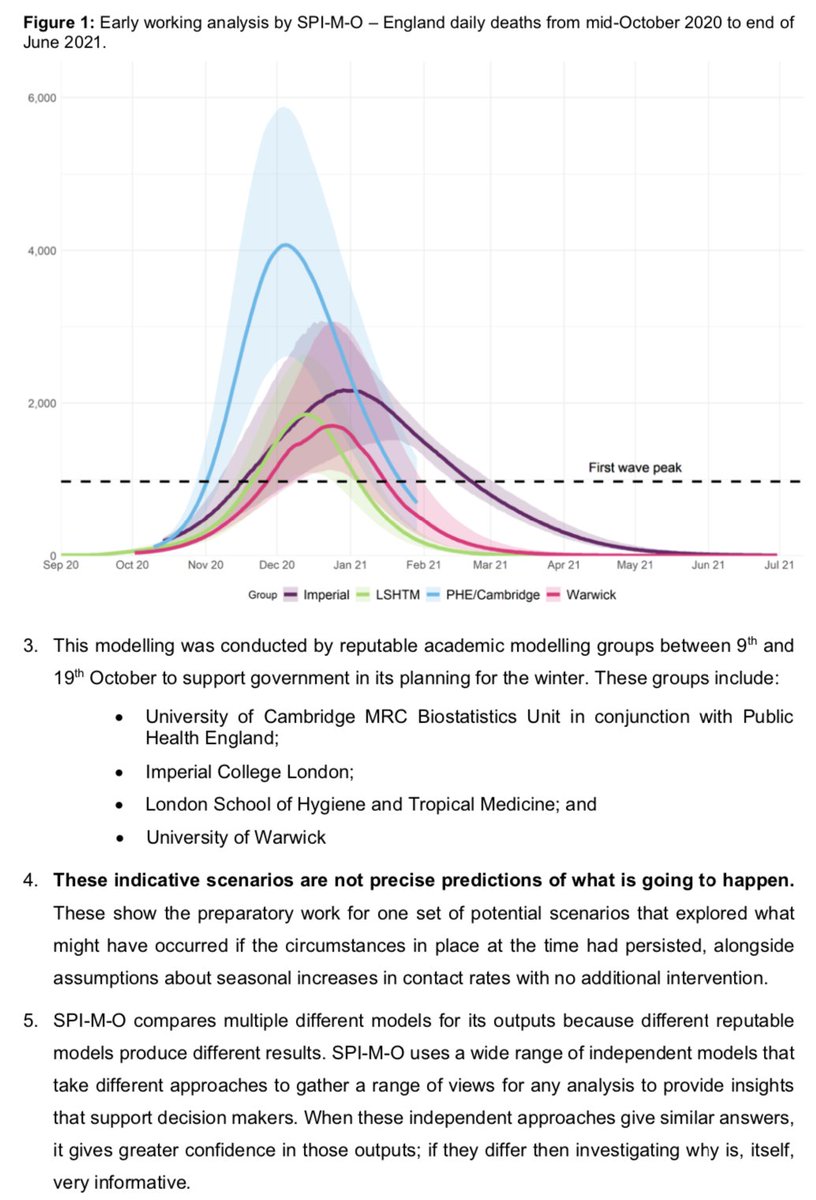
If the reproduction number drops below 1, an epidemic won't disappear immediately. But how many additional infections will there be before it declines to very low levels? Fortunately there's a neat piece of maths that can help... 1/
Let's start by considering a situation where one person is infectious. On average they'll infect R others, who in turn will infect R others, and so on. We'd therefore get the following equation for average outbreak growth: 2/ 

If R is above 1, the outbreak will continue to grow and grow until something changes (control measures, accumulated immunity, seasonal effects etc.) But if R is below 1, above transmission process will decline & converge to a fixed value. (Proof here: en.wikipedia.org/wiki/Geometric…) 3/ 

For example, if we have a single case and R=0.8, we'd expect an overall outbreak size = 1/(1-0.8) = 5 (i.e. 4 additional infections if we don't count the initial one). If R=0.9, we'd expect 9 additional infections. 4/
So far we've assumed 1 initial infection, but if we start with more we can just multiply the outbreak size accordingly. So if we start with 10,000 infections and R=0.9, we'd expect an additional 90,000 infections before the outbreak fades to very low levels. 5/
Here's a plot to show the number of additional infections per initial infection for different values of R between 0.5 and 0.999 (note log scale on y-axis). In other words, even if R is below 1, amount it's below one makes a big difference to subsequent number of infections. 6/ 

"What if superspreading events can occur?" you ask... Well, the above method happens to work regardless of how much overdispersion there is: journals.plos.org/ploscompbiol/a… 7/
More on the origins of these ideas: theconversation.com/the-ancient-gr… 8/8
• • •
Missing some Tweet in this thread? You can try to
force a refresh









